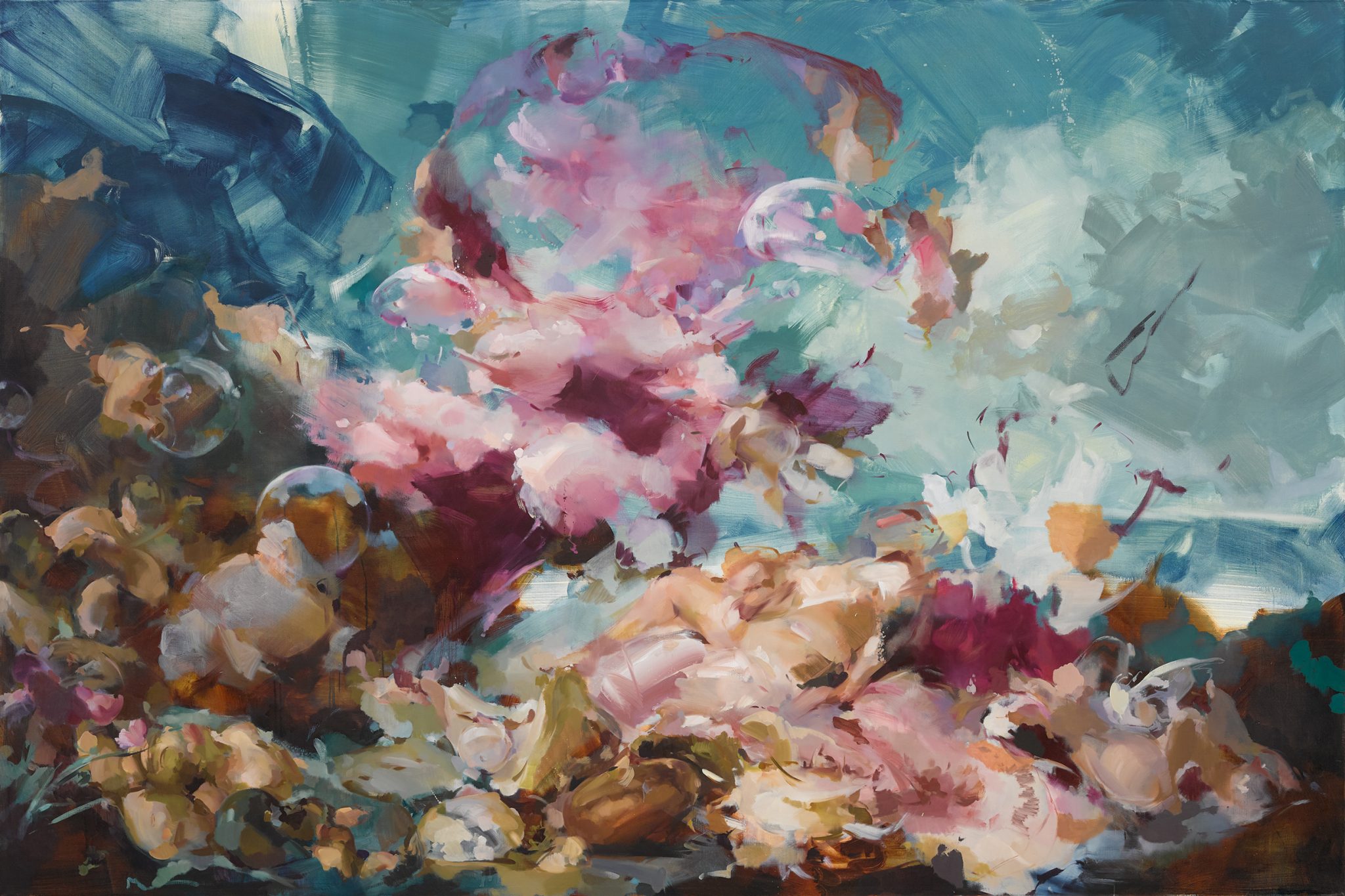In her big, dazzling canvases, voluptuousness takes on a more monstrous, excessive form
A painting might not represent anything, but this doesn’t make it ‘abstract’. In Flora Yukhnovich’s big, dazzling canvases, strokes and marks coalesce in clumps and nebulae, these arranged so that they look like the foregrounds to background washes of pastoral greens, oceanic blues and cumulus-cloud whites. You don’t need to be told that Yukhnovich’s canvases might refer to old Renaissance and Rococo masterpieces to get the sense that there are images hidden somewhere in plain sight here. Take Crème de la Mer (all works 2022): its composition echoes Fragonard’s famous and ridiculous The Swing (1767), with its aristocratic fête galante couple tittering at the loss of a dainty shoe, flung high in the air from the lady’s stockinged toes as her beau reclines, snatching a look up her voluminous pink skirts as she flies. Thankfully Yukhnovich’s play with feminine clichés – the myth of Venus is offered as a thread through these paintings – rips up the sexist prurience and the voyeurism of old paintings of pale naked goddesses, flinging everything into a delirious contemporary bacchanalia of painterly excess in which voluptuousness takes on a more monstrous, excessive form.

Maybe She’s Born with It has an explosive trunk of purple and pink bursting into the centre of a vaguely grassy surrounding, scattering transparent bubbles all about it against a distant horizon – Yukhnovich knows how to drop enough of a visual cue to trigger a sense of scale, space and matter. In a sense, she is only rediscovering the melting, dissolving visual erotics that already hide inside Baroque and Rococo painting’s taste for naked bodies. Veiling and revealing, then, are ambiguous here, since we’re not offered the trickier ethics of pornography, even as the exhibition’s title seems to hint at the games of erotic provocation and denial spawned by selfie culture.
But it’s hard to see these fantastical scenes as anything but wholesome – it’s the old ambiguities of sexual power, perhaps, that Yukhnovich’s ‘abstractions’ in fact seek to censor, or abolish. Pillow Talk, a frenetic ascension of fleshy entities out of a rocky sea, seems to find its source not only in Noël-Nicolas Coypel’s celebratory The Birth of Venus (c. 1732), but also Coypel’s more violent The Abduction of Europa (1727). Yet the female protagonist at the heart of these is somehow not even hinted at in the centre of Pillow Talk – an absence in the midst of the ecstatic tumult. There is a strange conversation in Yukhnovich’s otherwise felicitous fantasies: about how desire and visuality are nowadays negotiated, in acts of showing and concealing, of erasure and sublimation.
Flora Yukhnovich, Thirst Trap, was on view at Victoria Miro, London, 1 – 26 March 2022
